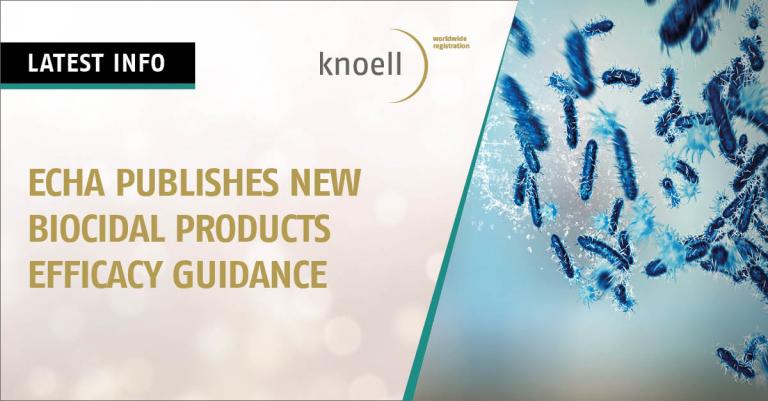ECHA publishes new biocidal products efficacy guidance (EU) No 528/2012
Version 6.0 of the Volume II: Efficacy Guidance Parts B+C has been published this month for the efficacy assessment and evaluation of biocidal products in the EU, under the Biocidal Products Regulation, (EU) No. 528/2012.
The publication includes the long-awaited guidance for Product Types (PT) 11 and 12 preservative products used in liquid-cooling and processing systems and against the growth of slime in industrial processes (slimicides).
In the same format as used for the other PTs, the guidance lays out the typical industry systems applicable to these types of biocidal products and gives an overview of the background to the industry, purpose of the treatment and mode of application. As with other preservatives (main group 2, of the 22 Product Types of the BPR), PT 11 and PT 12 biocidal products can be employed to exert a preventative or curative effect. A preventative treatment is a regular frequency application to maintain controlled levels of microbial population, either by an ongoing continuous application or periodic batch application ensuring that the microorganisms present do not interfere with the materials or equipment involved. In contrast, a curative effect aims to produce a biocidal effect much greater than a preventative effect as is used to control microorganisms that may have built up in the environment unexpectedly or when the process was off-line.
In this scenario a ‘shock’ dose is applied to cure the environment of the heavy microbial load. PT 11 biocidal product use examples include the control of microorganisms in the waters and fluids in cooling systems, heat exchangers, air conditioning systems and pasteurisers. For PT 12 slimicides, the uses of controlling or preventing the growth of slime in the paper-making and oil industries are presented. The guidance suggests relevant considerations and test methods in each case. It is important to remember that the guidance for these product types is related to the preservation of the materials, equipment and structures of the machines or processes in use, and not the preservation of the fluids or materials during their storage, which would fall under PT 6.
Why is this important?
In order for the functional processes of many industries to be maintained, biocidal products must be used. A build up of biofouling micro- (bacteria, fungi, algae, amoebae) or macro-organisms (molluscs) can cause reduced output quality, pipework blockages and corrosion, malodours, and considerable reductions in flow rates. In the cases of PT 11 and 12, biocides for the use in processing systems not only contribute to the sustained efficiency and functionality of the manufacturing systems but also prevent serious health concerns from human pathogens such as mycobacteria, Legionella pneumophila and Naegleria fowleri “brain-eating amoeba” common in these warm and moist environments. Note, however, that for these types of organisms (Legionella and amoebae) that national legislation may also exist. These are out of scope of this guidance and should be considered separately.
The updated guidance provides some typical test methods and test organisms that should be followed to evaluate product efficacy. These are referenced in the text per use and also in the newly provided guidance tables together with some terminology definitions where needed. As with other PTs, there may be some borderline cases where it is unclear as to which product type a biocidal use may fall into. In these cases, borderline cases should be discussed with the relevant Competent Authority.
Please contact the knoell Biocides team here or check out our website for additional information on how the changing regulation may affect your products.


